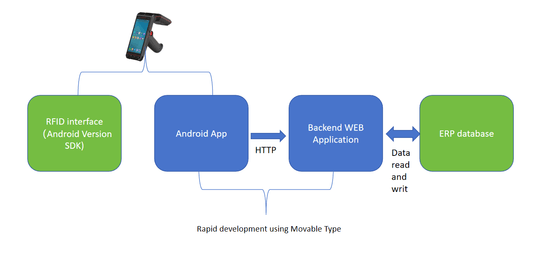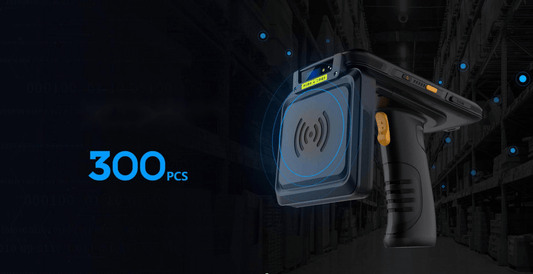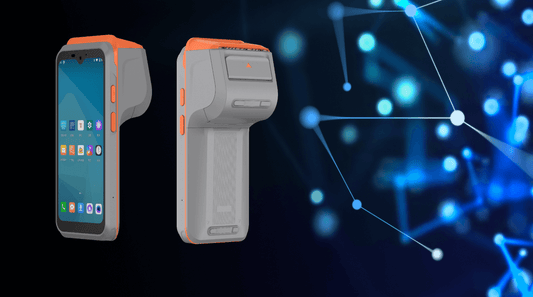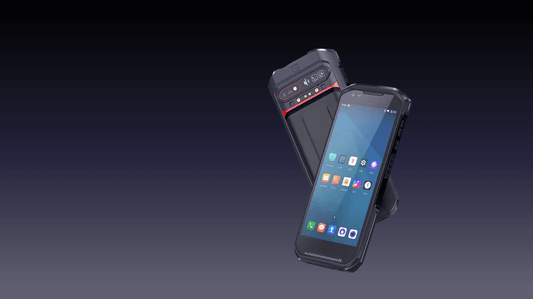The Future of Rugged Handheld Terminals: Trends to Watch in 2025
The rugged handheld terminal market has evolved significantly over the past decade, driven by advancements in durability, connectivity, and software capabilities. As we move into 2025, these devices are becoming even more critical in industries such as logistics, manufacturing, healthcare, and field services. With increasing demands for real-time data processing, AI integration, and enhanced durability, rugged handheld terminals are set to undergo transformative changes.
In this blog, we’ll explore the key trends shaping the future of rugged handheld terminals in 2025, including:
-
Enhanced Durability and Sustainability
-
5G and IoT Integration
-
AI and Machine Learning Capabilities
-
Improved Battery Life and Fast Charging
-
Advanced Biometric and Security Features
-
Modular and Customizable Designs
-
Augmented Reality (AR) for Field Operations
Let’s dive into each of these trends in detail.
1. Enhanced Durability and Sustainability
Rugged handheld terminals are designed to withstand harsh environments, but in 2025, we’ll see even greater improvements in durability. Manufacturers are focusing on:
-
Military-grade materials – More devices will meet IP68 and MIL-STD-810H standards, ensuring resistance to water, dust, drops, and extreme temperatures.
-
Eco-friendly designs – With increasing emphasis on sustainability, companies are using recycled materials and modular components that reduce e-waste.
-
Self-healing coatings – Some rugged devices may incorporate scratch-resistant and self-repairing surfaces to extend lifespan.
Sustainability will be a major selling point, as businesses look for devices that align with their environmental goals.
2. 5G and IoT Integration
The rollout of 5G networks is revolutionizing connectivity, and rugged handheld terminals are set to benefit significantly. In 2025, we can expect:
-
Ultra-fast data transfer – 5G enables real-time data syncing, improving logistics tracking, remote diagnostics, and inventory management.
-
Seamless IoT connectivity – Rugged devices will integrate with IoT sensors in warehouses, factories, and smart cities, enabling predictive maintenance and automated workflows.
-
Edge computing – Instead of relying solely on cloud processing, rugged terminals will process data locally, reducing latency and improving efficiency.
These advancements will make rugged handheld terminals indispensable in Industry 4.0 applications.
3. AI and Machine Learning Capabilities
Artificial intelligence is transforming how businesses operate, and rugged handheld terminals are no exception. Key AI-driven trends include:
-
Predictive analytics – AI-powered terminals can forecast equipment failures, optimize supply chains, and improve inventory accuracy.
-
Voice and vision recognition – Workers will use voice commands and image recognition for hands-free operations, increasing productivity.
-
Automated decision-making – AI algorithms will assist in real-time decision-making, such as route optimization for delivery drivers or defect detection in manufacturing.
By 2025, AI will be deeply embedded in rugged devices, making them smarter and more autonomous.
4. Improved Battery Life and Fast Charging
Battery technology is a critical factor in rugged handheld terminals. In 2025, we’ll see:
-
Solid-state batteries – Offering higher energy density, faster charging, and longer lifespan compared to traditional lithium-ion batteries.
-
Solar and kinetic charging – Some rugged devices may incorporate alternative charging methods for field workers in remote locations.
-
Power-efficient processors – New chip designs will optimize energy consumption, allowing terminals to last multiple shifts on a single charge.
These innovations will minimize downtime and ensure continuous operation in demanding environments.
5. Advanced Biometric and Security Features
With increasing cybersecurity threats, rugged handheld terminals must prioritize data protection. Key security trends include:
-
Multi-factor authentication (MFA) – Fingerprint, facial recognition, and iris scanning will become standard for secure access.
-
Blockchain for data integrity – Some industries may use blockchain to ensure tamper-proof logs for compliance and auditing.
-
Encrypted communications – End-to-end encryption will be essential for secure data transmission in defense and healthcare applications.
Security will remain a top priority as rugged devices handle sensitive enterprise data.
6. Modular and Customizable Designs
One-size-fits-all solutions are becoming obsolete. In 2025, rugged handheld terminals will offer:
-
Hot-swappable components – Users can replace batteries, scanners, or sensors without shutting down the device.
-
Industry-specific configurations – Terminals tailored for healthcare, construction, or retail will feature specialized peripherals.
-
3D-printed accessories – Companies may offer customizable grips, mounts, and cases for unique operational needs.
Modularity will allow businesses to adapt devices to their exact requirements, reducing costs and improving efficiency.
7. Augmented Reality (AR) for Field Operations
AR is no longer just for gaming—rugged handheld terminals will leverage AR for:
-
Remote assistance – Technicians can receive real-time visual guidance from experts via AR overlays.
-
Warehouse navigation – AR-powered terminals can display optimal picking routes, improving logistics efficiency.
-
Training simulations – New employees can learn complex tasks through interactive AR tutorials.
By 2025, AR will be a standard feature in high-end rugged devices, enhancing workforce productivity.
Conclusion
The rugged handheld terminal market is poised for significant advancements in 2025, driven by 5G, AI, sustainability, and enhanced durability. These devices will become even more integral to industries requiring real-time data, secure operations, and extreme reliability.
Businesses that adopt next-gen rugged terminals will gain a competitive edge through improved efficiency, reduced downtime, and smarter workflows. As technology continues to evolve, one thing is clear: rugged handheld terminals are not just surviving harsh conditions—they’re thriving in them.
Are you ready for the future of rugged technology? Stay ahead by keeping an eye on these emerging trends in 2025!
No comments











0 comments